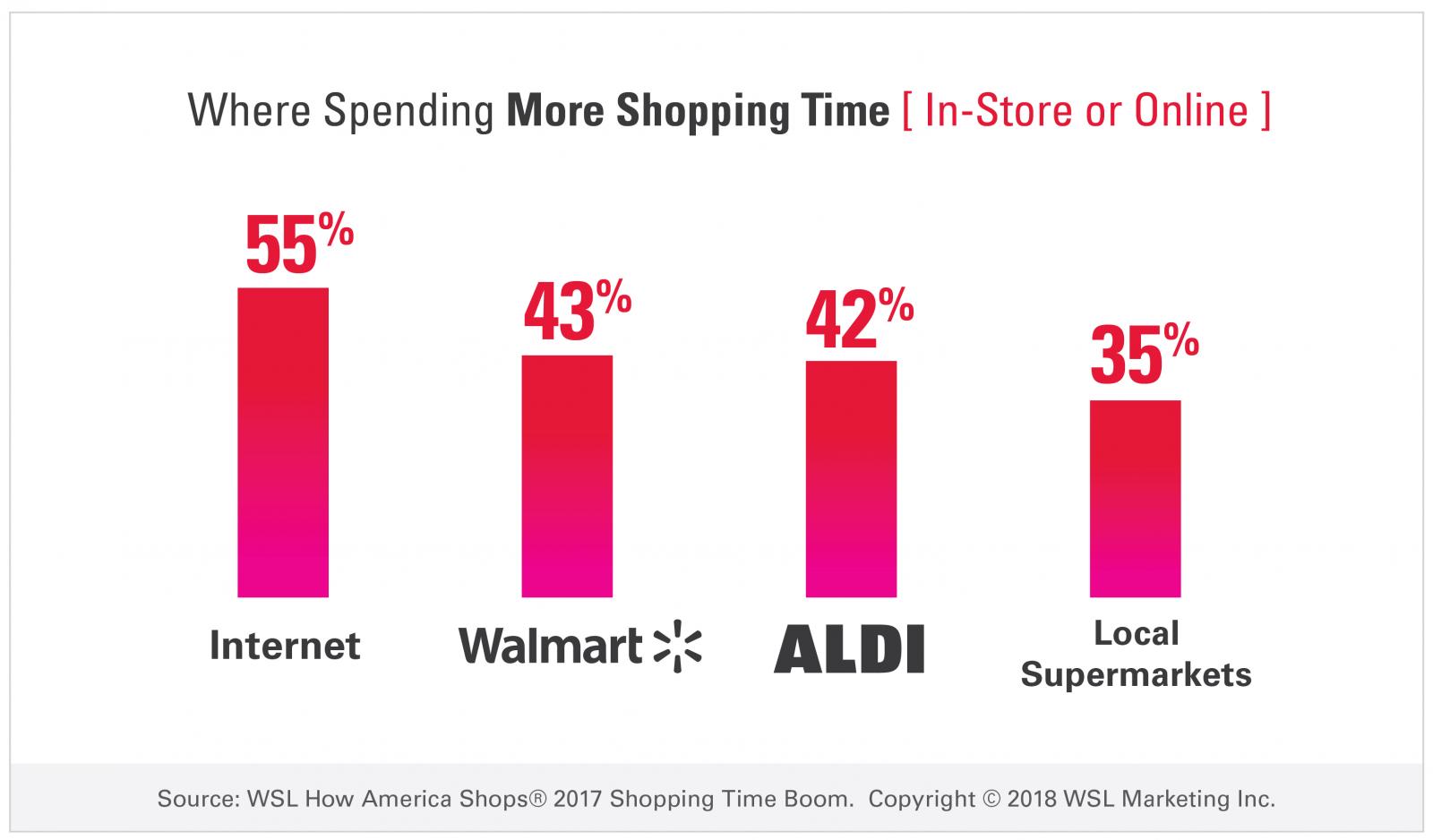After nearly a decade of pushing back, not wanting to be tempted, consumers are ready to spend more time shopping – a good sign because it means they’re willing to spend more money again. But converting their time into your money means helping them do what they have to do so they’re free to spend time (and money) on what they want to do. Achieving this means recognizing the difference between when they want to get the trip done quickly and when they want to browse. Here’s how to know.
Shoppers Want to Spend Money but Time Restraints Don’t Allow
Call it the post-cautionary conundrum. Shoppers are finally willing to spend more money, but because of their continuing time pressures, they’re not always able.
They have increased the amount of time they use for shopping by more than any other activities, including eating (in and out), entertainment, working or socializing, according to our How America Shops® Reports.
Your Future Growth Depends on Helping Shoppers Manage Their Time
Nearly four-in-ten of shoppers told us they spend more time shopping and browsing today than two or three years ago. One-third said online browsing is now a habit and one quarter that they’re checking out interesting stores.
The trick to turning those visits into spending is in knowing when shoppers are on a mission and want to cross items off their lists, and when they want to browse. Brands and retailers that deliver on both will capture their spending.
Turning Store Visits Into Sales
How to turn those “mission” trips and browsing journeys into shopping splurges? By knowing the difference between the two. Here are some hints:
- While 36% are spending more time shopping/browsing, it’s concentrated in fewer channels, and chiefly the Internet
- More than half, spend more time shopping online. In fact, they are spending an additional one hour a week, on average, than two or three years ago. report.
- Mass merchandisers and supermarkets follow, particularly among younger shoppers.
- Financial security is a big motivator – 7/10 are feeling more financially secure.
- Still, one third ask themselves before shopping, “Is this a smart use of my time?”
Save Them Time and They’ll Spend More Money
Becoming a good use of shopper time then means mastering a simple formula: Help them be more efficient – from research to fulfillment – and they’re likely to spend more money.
For example, the chains that gained the greatest increase in shopper time over the past two to three years are those that added the most value in terms of efficiency, convenience and savings:

How to Make Shopping More Efficient for Your Customers
Are You Delivering a Good Return on Investment of Your Customer’s Time?
Learn how shoppers want to spend time in your category and then calculate whether you are delivering a good return on that investment. If it is a quick-hit item, is it near the door and adjacent to complementary items that will save them a few minutes?
Make Fans Online by Exciting Shoppers
Capture the shopper’s imagination, especially online, by interrupting the moment with ingenuity. It is online where shoppers become fans, even among brick-and-mortar chains. Think: Is this moment Instagram-able, but also functional? The shopper is more likely to spend time with, and therefore buy, items that capture their attention and are easy to understand. These are among the reasons shoppers spend more time on Ulta and CVS’s websites and apps.
Make Price a Bonus, Not a Lure
Price is a critical component of value, but brands that rely too heavily on it risk wallowing in mediocre-ville. Note that as many as 40% of shoppers choose specific chains, such as Trader Joe’s, because they feel good about spending their money with them.
It’s not merely that price and time have competing value with shoppers; their value fluctuates across categories and times of day. The answer to cracking the code is how will you spend their time and make their lives easier. Their time is now your money, but you have to earn it.



